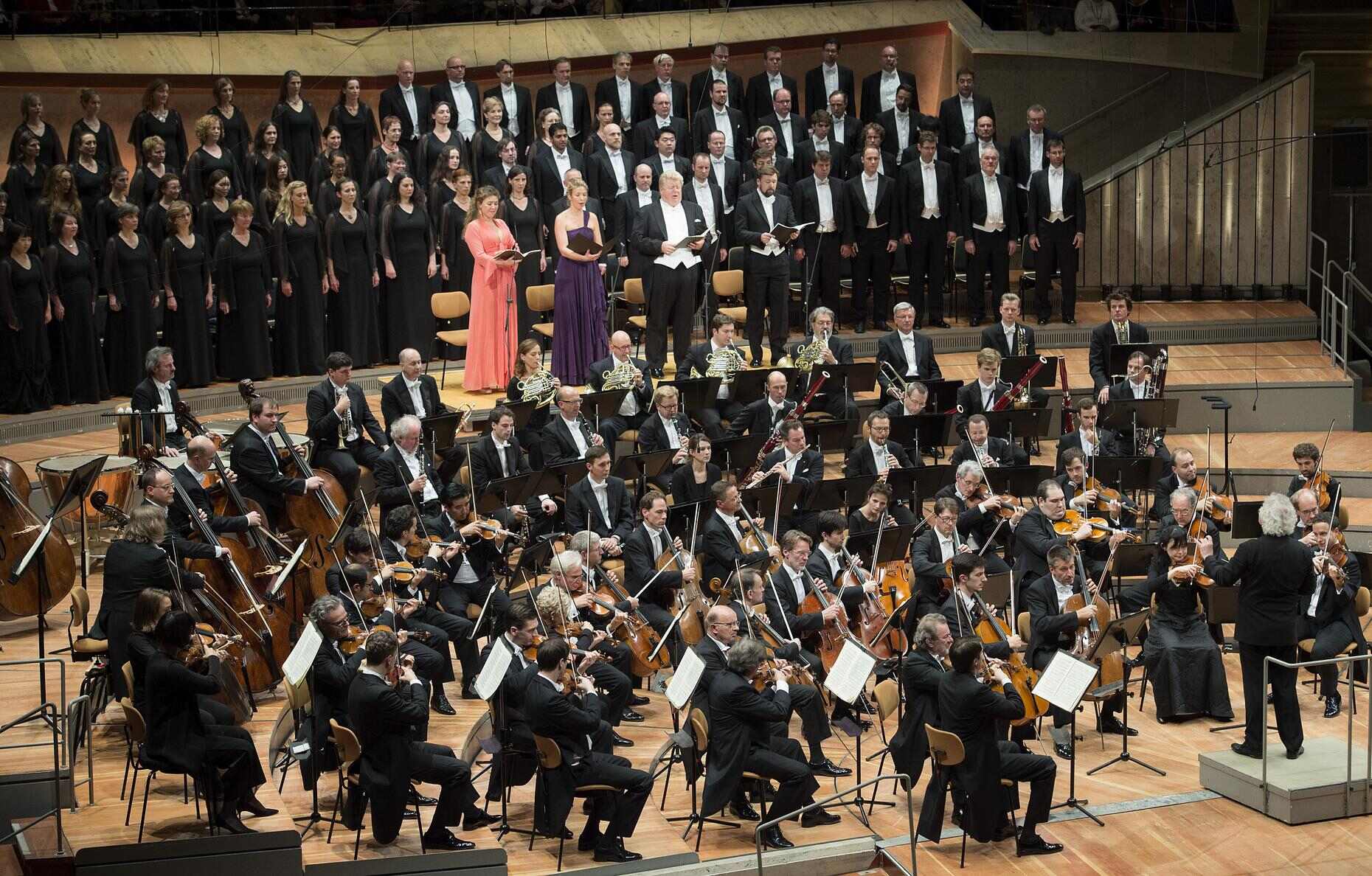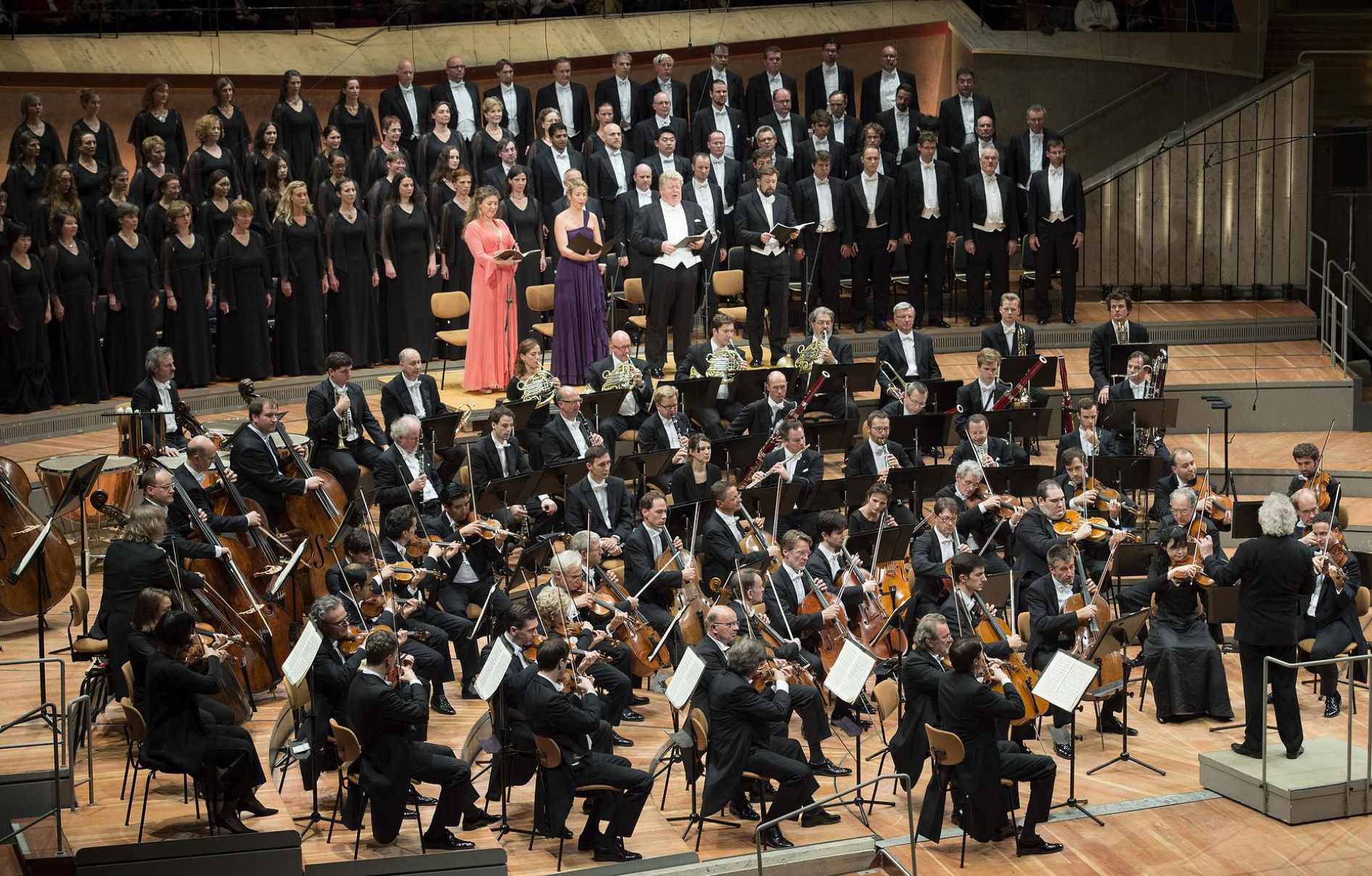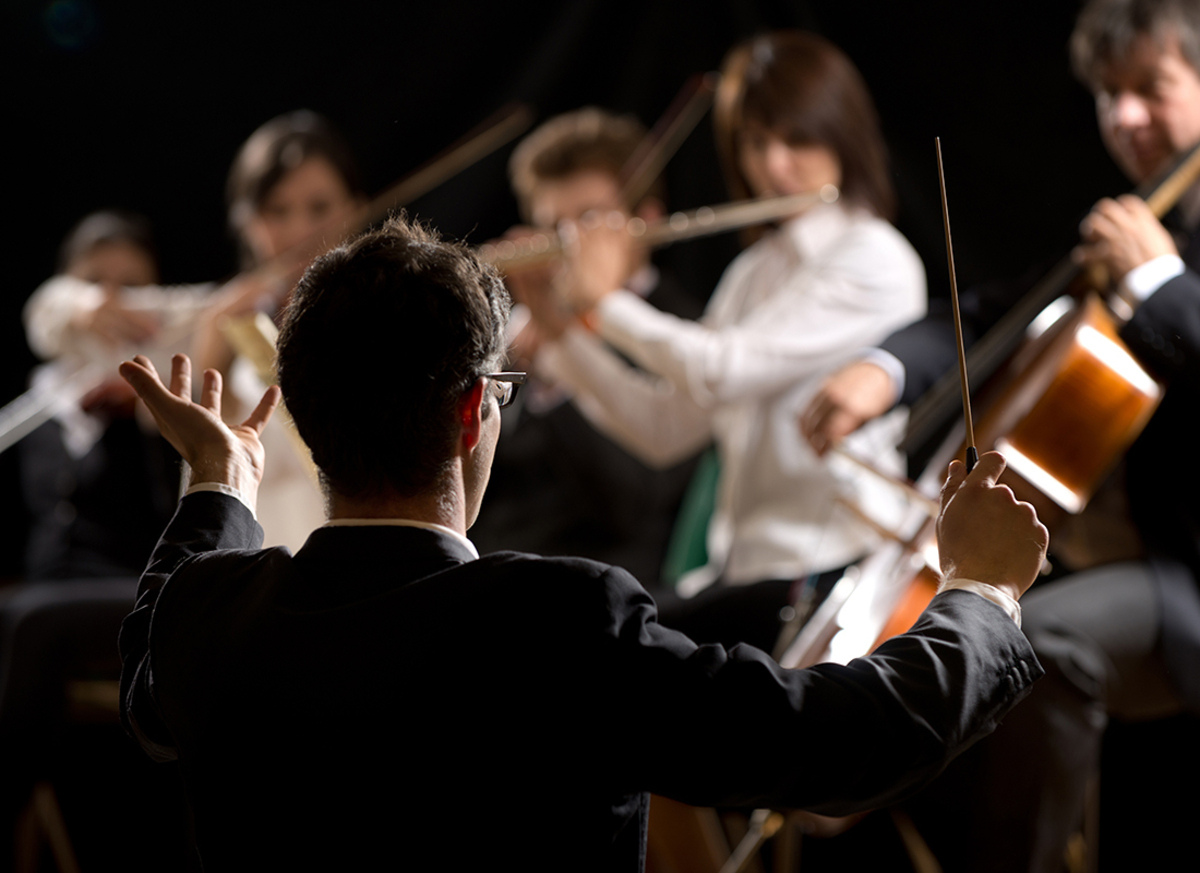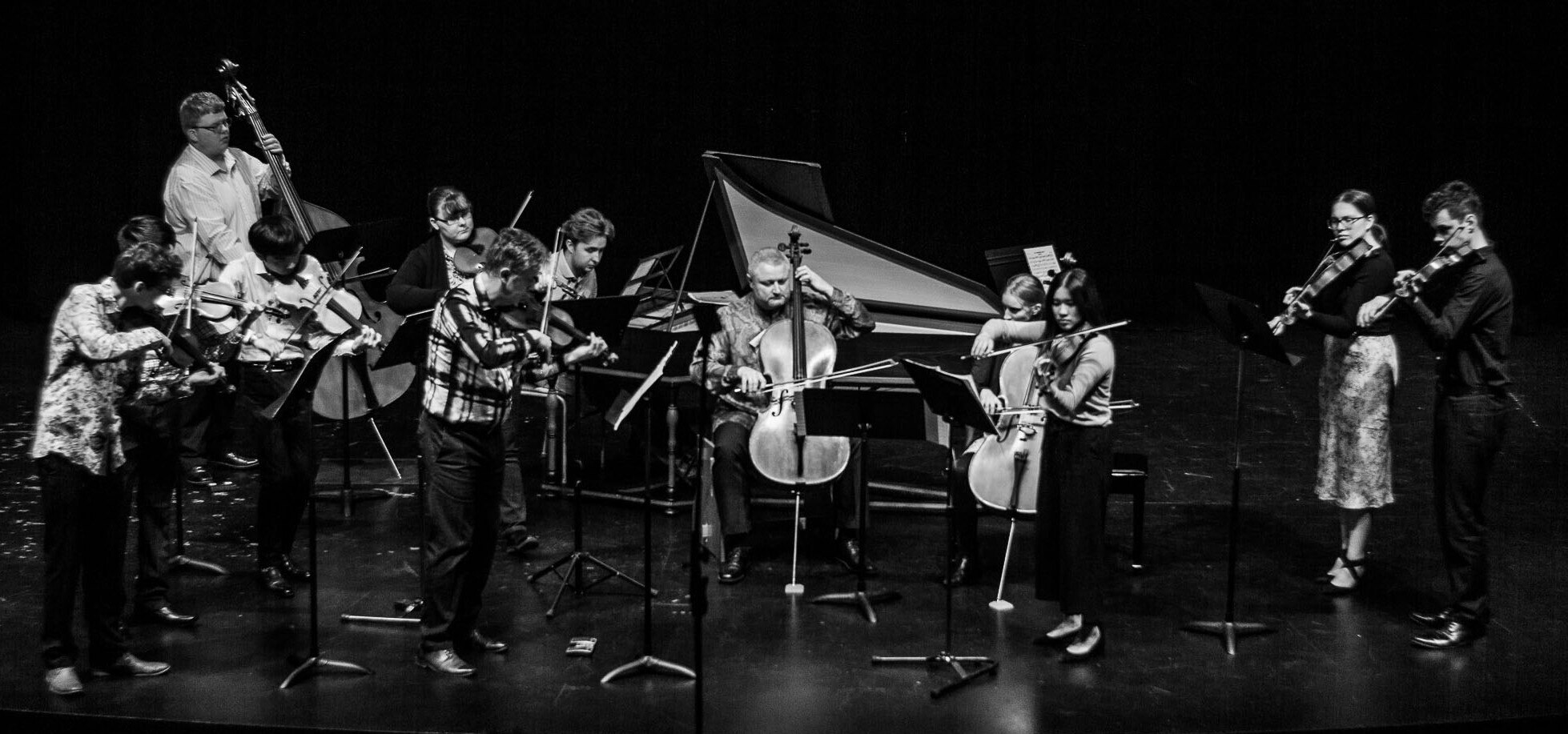Home>Production & Technology>Orchestra>How Did The Classical Orchestra Differ From The Earlier Baroque Orchestra?


Orchestra
How Did The Classical Orchestra Differ From The Earlier Baroque Orchestra?
Published: February 24, 2024
Discover the key differences between the classical and baroque orchestra, including changes in instrumentation, structure, and musical style. Explore the evolution of the orchestra.
(Many of the links in this article redirect to a specific reviewed product. Your purchase of these products through affiliate links helps to generate commission for AudioLover.com, at no extra cost. Learn more)
Table of Contents
Introduction
The transition from the Baroque to the Classical era marked a significant evolution in musical composition and orchestral arrangement. This shift brought about notable changes in musical style, structure, instrumentation, and the role of the conductor within the orchestra. Understanding the differences between the Baroque and Classical orchestras provides valuable insight into the development of orchestral music and the cultural context in which these changes occurred.
The Baroque era, spanning roughly from 1600 to 1750, was characterized by ornate and elaborate compositions that often featured intricate polyphony and the extensive use of ornamentation. In contrast, the Classical era, which emerged in the mid-18th century and lasted until the early 19th century, embraced a more streamlined and balanced approach to music, favoring clarity, symmetry, and emotional restraint.
As the Classical era unfolded, composers sought to create music that was accessible to a broader audience while maintaining artistic integrity. This shift in focus led to the development of new musical forms, such as the sonata-allegro and the symphony, which became central to the orchestral repertoire. These forms provided composers with a framework for creating works that emphasized thematic development, contrast, and structural coherence, setting them apart from the intricate polyphonic textures of the Baroque period.
The evolution of musical style also influenced the way in which orchestras were organized and utilized. The Baroque orchestra typically consisted of a smaller ensemble, often featuring strings, continuo, and occasionally woodwinds and brass. In contrast, the Classical orchestra expanded in size and scope, incorporating a wider range of instruments, including the newly developed clarinet and the emergence of the symphonic brass section. This expansion allowed composers to explore a broader palette of sounds and textures, contributing to the richness and diversity of the Classical orchestral repertoire.
Moreover, the role of the conductor underwent a transformation during this period. While the Baroque orchestra was often led by the concertmaster or a keyboard player from within the ensemble, the Classical era saw the emergence of the conductor as a distinct and influential figure. This shift brought about a more unified and cohesive approach to orchestral performance, as conductors assumed responsibility for shaping interpretations, coordinating ensemble dynamics, and ensuring precision in musical execution.
The transition from the Baroque to the Classical orchestra represents a pivotal moment in the history of orchestral music, reflecting broader cultural and artistic shifts that continue to resonate in contemporary musical practices. By exploring the differences between these two distinct musical periods, we gain a deeper appreciation for the evolution of orchestral music and the enduring legacy of the Classical era.
Musical Style and Structure
The transition from the Baroque to the Classical era brought about a fundamental shift in musical style and structure, reflecting evolving artistic sensibilities and cultural developments. In the Baroque period, musical compositions were characterized by intricate polyphony, elaborate ornamentation, and a strong emphasis on contrapuntal textures. Composers such as Johann Sebastian Bach and Antonio Vivaldi exemplified the rich complexity of Baroque music, employing intricate fugal forms and virtuosic embellishments to create ornate and intellectually stimulating works.
In contrast, the Classical era embraced a more balanced and transparent approach to musical expression. Composers sought to convey clarity, symmetry, and emotional restraint in their compositions, favoring elegant melodies, well-defined harmonic progressions, and a heightened sense of formal structure. This shift in focus gave rise to new musical forms, such as the sonata-allegro, which became a cornerstone of Classical composition. The sonata-allegro form provided composers with a flexible framework for developing thematic material, contrasting musical ideas, and creating a sense of dramatic tension and resolution within their works.
Furthermore, the Classical period witnessed the emergence of the symphony as a prominent musical genre, offering composers a platform to explore expansive and multi-movement compositions. Symphonies typically consisted of four movements, including an opening allegro, a slow and lyrical second movement, a lively and dance-like third movement, and a spirited finale. This structural framework allowed composers such as Wolfgang Amadeus Mozart and Ludwig van Beethoven to craft symphonic works that showcased a wide range of emotions, moods, and thematic development, reflecting the expressive depth and diversity of the Classical style.
The transition from the intricate polyphony of the Baroque period to the balanced clarity of the Classical era represented a significant evolution in musical expression and compositional technique. Composers of the Classical era sought to engage listeners through accessible and emotionally resonant music, employing clear formal structures, memorable melodies, and dynamic contrasts to captivate audiences. This emphasis on clarity, elegance, and emotional directness laid the foundation for the enduring appeal of Classical music and continues to inspire composers and performers to this day.
The evolution of musical style and structure from the Baroque to the Classical era reflects a profound transformation in artistic sensibilities and cultural outlook, shaping the trajectory of Western classical music and leaving an indelible mark on the orchestral repertoire. By examining the distinctive characteristics of these two musical periods, we gain valuable insight into the evolution of musical expression and the enduring legacy of the Classical era.
Instrumentation and Orchestration
The evolution of orchestral instrumentation and orchestration from the Baroque to the Classical era reflects a profound expansion in the sonic possibilities and expressive potential of the orchestra. In the Baroque period, orchestras were typically smaller in size and more homogeneous in their instrumental makeup. Core ensembles often featured strings, including violins, violas, cellos, and double basses, accompanied by a continuo section comprising harpsichord, organ, or lute, which provided harmonic support and embellishment. Occasionally, woodwinds such as flutes, oboes, and bassoons, as well as brass instruments like trumpets and horns, were incorporated to enrich the orchestral palette, particularly in works of grand ceremonial or festive nature.
As the Classical era unfolded, orchestras underwent a significant expansion in both size and instrumental diversity, reflecting the growing demand for a broader range of tonal colors and expressive possibilities. Composers such as Mozart, Haydn, and Beethoven sought to harness the full potential of the orchestra, incorporating new instruments and expanding the role of existing ones to achieve greater sonic richness and expressive depth. One of the most notable developments during this period was the integration of the clarinet into the orchestral fabric, adding a new timbral dimension and enhancing the expressive capabilities of woodwind sections. The emergence of the clarinet as a prominent orchestral instrument contributed to the distinctive tonal palette of the Classical orchestra and inspired composers to explore a wider range of orchestral textures and timbres.
Furthermore, the Classical era witnessed the establishment of the symphonic brass section as a prominent and integral component of the orchestra. Composers began to harness the power and brilliance of brass instruments, including trumpets, horns, trombones, and occasionally, the newly developed valve instruments, to create grand and majestic orchestral effects. This expansion of the brass section not only added a new dimension of sonority and grandeur to orchestral compositions but also facilitated the exploration of dramatic contrasts and dynamic range within symphonic works.
The evolution of orchestral instrumentation and orchestration from the Baroque to the Classical era reflects a profound expansion in the sonic possibilities and expressive potential of the orchestra. Composers of the Classical era embraced a broader palette of instruments and sought to exploit the full range of orchestral colors and timbres, leading to the development of a rich and diverse orchestral repertoire that continues to captivate audiences and inspire musicians to this day.
Role of the Conductor
The transition from the Baroque to the Classical era brought about a transformative shift in the role of the conductor within the orchestral setting. In the Baroque period, the concept of a conductor, as understood in the modern sense, was virtually non-existent. Orchestras were often led by the concertmaster, a prominent violinist who provided musical guidance from within the ensemble, or by a keyboard player who directed performances from the harpsichord or organ. The absence of a designated conductor meant that ensemble coordination and interpretation were largely decentralized, with individual musicians assuming greater responsibility for ensemble unity and musical direction.
However, as the Classical era unfolded, the role of the conductor began to undergo a significant transformation. Composers such as Haydn and Mozart, recognizing the need for a unifying and authoritative figure to guide orchestral performances, started to assume the role of the conductor themselves, providing direction and shaping interpretations from a central position in front of the orchestra. This shift marked the emergence of the conductor as a distinct and influential figure within the orchestral landscape, as conductors assumed responsibility for shaping interpretations, coordinating ensemble dynamics, and ensuring precision in musical execution.
The growing complexity and expressive depth of Classical orchestral compositions demanded a more unified and cohesive approach to performance, prompting the establishment of the conductor as a critical facilitator of musical interpretation and ensemble coordination. Conductors played a pivotal role in shaping the expressive nuances of a composition, guiding musicians through dynamic contrasts, phrasing, and articulation to realize the composer's intentions. Additionally, conductors assumed responsibility for maintaining ensemble balance and cohesion, ensuring that individual instrumental voices coalesced into a unified and coherent musical statement.
Moreover, the emergence of the conductor as a central figure in orchestral performances facilitated a more efficient and organized rehearsal process, allowing for detailed musical exploration and refinement. Conductors provided valuable insight and direction to musicians, offering interpretive guidance and technical expertise to achieve a cohesive and compelling musical interpretation. This collaborative approach to orchestral leadership fostered a deeper sense of artistic unity and collective purpose, elevating the overall quality and impact of orchestral performances.
The evolution of the conductor's role from the Baroque to the Classical era reflects a profound transformation in the organization and leadership of orchestral performances, underscoring the conductor's vital contribution to the realization of musical expression and artistic vision. The establishment of the conductor as a central figure within the orchestral ensemble not only enhanced the precision and expressive depth of orchestral performances but also laid the groundwork for the enduring legacy of the conductor as a linchpin of orchestral interpretation and musical leadership.
Conclusion
The transition from the Baroque to the Classical orchestra represents a pivotal moment in the history of orchestral music, reflecting broader cultural and artistic shifts that continue to resonate in contemporary musical practices. The evolution of musical style, instrumentation, and the role of the conductor from the Baroque to the Classical era reflects a profound transformation in artistic sensibilities and organizational dynamics within the orchestral landscape.
The Baroque era, with its intricate polyphony, ornate ornamentation, and decentralized approach to ensemble direction, laid the groundwork for the development of complex and intellectually stimulating musical compositions. Composers such as Bach and Vivaldi crafted works of unparalleled intricacy and emotional depth, showcasing the expressive potential of the Baroque orchestra within the context of sacred, chamber, and orchestral music.
In contrast, the Classical era embraced a more balanced, transparent, and emotionally direct approach to musical expression. Composers sought to engage a broader audience through accessible and emotionally resonant music, employing clear formal structures, memorable melodies, and dynamic contrasts to captivate listeners. The expansion of orchestral instrumentation, including the integration of the clarinet and the establishment of the symphonic brass section, enriched the orchestral palette and inspired composers to explore a wider range of orchestral textures and timbres.
Furthermore, the emergence of the conductor as a central and influential figure within the orchestral ensemble facilitated a more unified and cohesive approach to performance, as conductors assumed responsibility for shaping interpretations, coordinating ensemble dynamics, and ensuring precision in musical execution. This transformative shift in orchestral leadership not only enhanced the precision and expressive depth of orchestral performances but also laid the groundwork for the enduring legacy of the conductor as a linchpin of orchestral interpretation and musical leadership.
The evolution of the Classical orchestra from its Baroque predecessor reflects a profound expansion in the sonic possibilities and expressive potential of the orchestra, as well as a transformative reorganization of leadership and artistic vision within the orchestral landscape. By examining the differences between these two distinct musical periods, we gain valuable insight into the evolution of musical expression and the enduring legacy of the Classical era, which continues to inspire composers, performers, and audiences worldwide.











